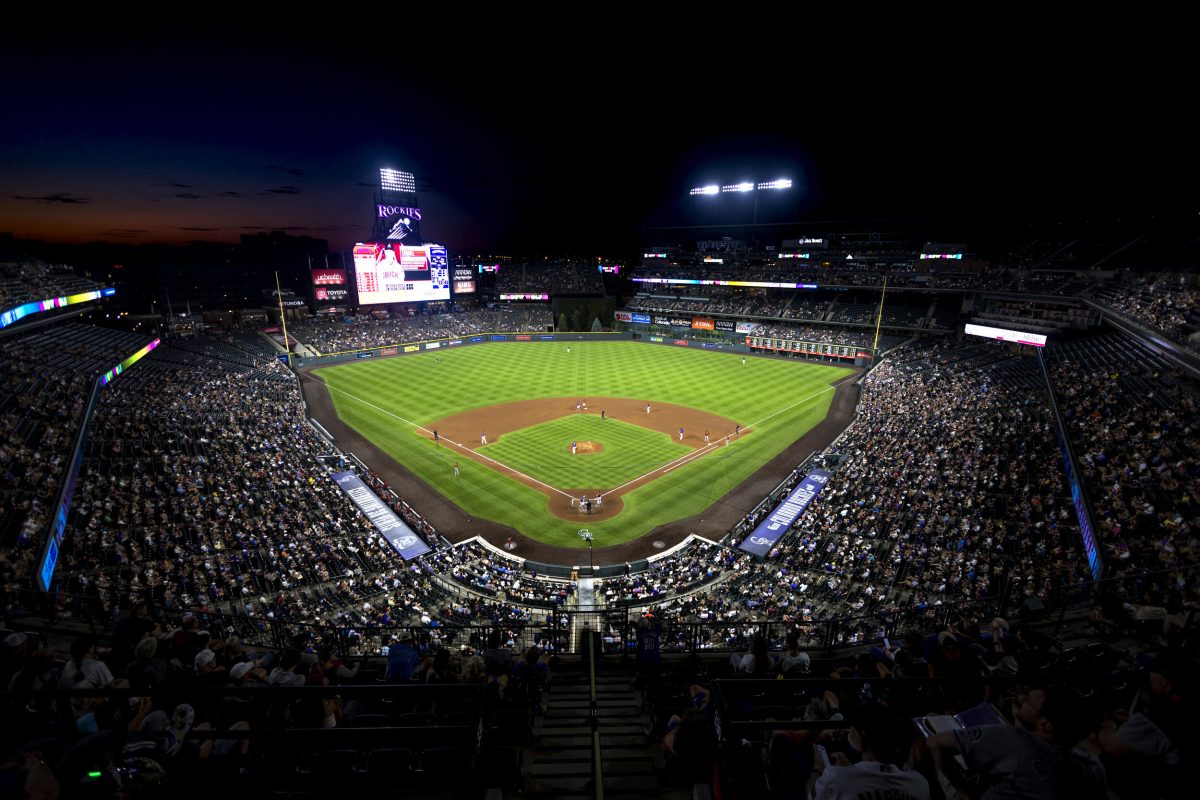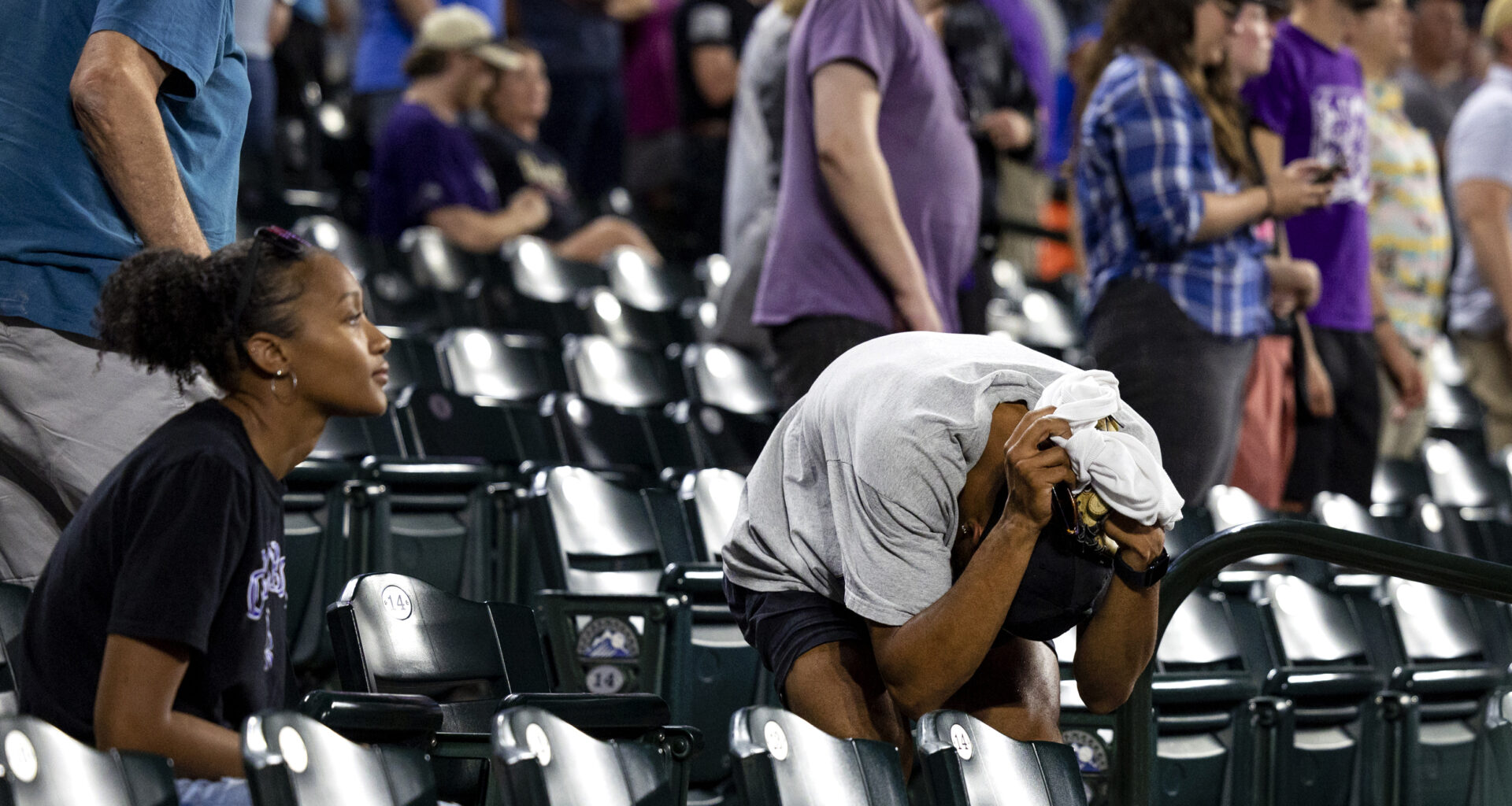The Colorado Rockies’ 2025 season comes to a close this weekend, not with a whimper but maybe more of a choking, guttural sigh.
Through Thursday night, the team has lost 116 games and won only 43. That means they won’t set the modern-era record for most losses in a season, but their record-awful -416 (and counting!) run differential will almost certainly stand the test of time. (The previous record for baseball’s modern era was -349, and the second-worst run differential in the majors this year is less than half as bad as the Rockies’.)
Reasons for the Rox’s wreck abound: They’re bad at drafting and player development, they’re bad at data analytics, they’re bad at innovation and listening to outside ideas. You know, nuts and bolts baseball things.
But a couple weeks ago, in a feature for our Colorado Sunday newsletter, we took a bigger swing: At the heart of the Rockies’ trouble is an inability to figure out how to play well at altitude and to switch back and forth between their high-elevation home and the low-elevation everywhere else. So we proposed a wild idea: What if the Rockies were allowed to use a raised-seam baseball at home that would produce more drag and move at altitude like a normal ball does at sea level?
Then we turned it over to you. What are your dreamy, audacious, just-crazy-enough-to-work ideas for fixing the Rockies? And you delivered big time (unlike a certain ballclub wearing purple).
Here are your ideas to turn around the terrors of 20th and Blake. Some of these have been lightly edited for length or clarity.
New owners
By far the most common response we received was that changing owners would change the team’s horizon. The Monfort brothers, beef barons of Greeley, have run the team for 30 years after pushing out trucking baron Jerry McMorris, the original owner.
Today, the Monforts are known as much for their real estate developments surrounding Coors Field as they are for their on-field investments.
Here’s Gene from Grand Junction:
We were at the first game at Mile High. We shared season tickets with friends until we left town in 2000. If we were still on the Front Range we would have dropped the tickets long ago. Changing the owners would be a more likely accomplishment than changing baseballs. Jerry McMorris was far more interested in winning and connecting with fans — yes, I did get to know him and he was a regular guy. I guess trucking is a more normal business than running a slaughterhouse.
Linda from Englewood, another early season ticket holder, had the same thought:
If the ball were the problem, then other teams would be faced with the same problem here — and they aren’t. We lose. They win. After all, in the early years, we had some competitive teams — and the altitude was the same. Plus their win record at home is actually better than their away record.
As season ticket holders since Day 1, we have been incredibly disappointed recently and have finally decided not to renew. I believe that the problem starts with the ownership. And that probably won’t change in the near future.
 Rockies fans watch in disbelief late in a loss to the Arizona Diamondbacks on Aug. 15, 2023. (Hugh Carey, The Colorado Sun)
Rockies fans watch in disbelief late in a loss to the Arizona Diamondbacks on Aug. 15, 2023. (Hugh Carey, The Colorado Sun)
Boot them to Triple-A
One feature of American sports leagues is that they are more or less cartels. Have an all-time terrible season? No worries, there’s always next year.
But what if there weren’t?
That’s the idea suggested by Serena of Denver:
In English soccer, the worst teams get relegated down to a lower league at the end of the season; and the best teams are promoted up. After at least 115 losses, it is time to relegate the Rockies. I don’t think this because the Rockies are the worst team in baseball and deserve to be relegated (they are and they do), but because I believe for the Rockies to be good, there needs to be a business incentive for these owners to care.
Year after year, regardless of the Rockies’ record, the owners rake in plenty of profit. Go to any Rockies game when the Dodgers, Cardinals, Astros or Cubs are in town and the opposing fans are the ones filling seats. Fans from around the country know that Coors Field is a lower-cost way to see the league’s stars and their favorite team. And the Rockies owners know they don’t need the Rockies to win for this cash cow.
I am tired of being a fan of a business and not a team. The only way I can see a way out of this rock bottom (pun intended) is the threat of relegation to the minors. Because the Rockies owners won’t make money off the Dodgers, Cardinals, Astros or Cubs fans if those teams don’t come to town. And if the Rockies owners don’t have a business incentive to stay in the major leagues, there is really no reason they’ll invest in — or care about — winning.
Lean into the chaos
Did you catch the All-Star Game this year? It ended with a first-of-its-kind, baseball-mashing home run derby to decide the winner.
Sunny of Lafayette saw that and thought: Heck yeah, baby.
MLB should do what they did in the All-Star Game to break the tie, which was to do a home run derby shootout à la NHL hockey instead of extra innings. Given that Coors Field is hitter-friendly, we would possibly win more overtime games. Plus, MLB has been trying to make the games shorter; this would also serve that purpose. It is another suggestion which they’ll never take, but I appreciate the opportunity to give it voice.
Change the field
Altitude isn’t the Rockies’ only riddle to solve. There’s also the problem of how the team has previously tried to account for altitude — namely, by putting the fences at Coors Field waaaaaaay back.
Coors’ cavernous outfield is the largest in baseball. That may limit home runs, but it also makes the stadium a place where shallow popups become inning-extending base hits and base hits become run-scoring doubles and triples.
And that’s where two readers put their focus. First, Peter from Denver:
Here’s an idea that is completely within the current rules: move home plate forward by 10-ish feet. This has two potential positive effects: it makes the outfield smaller and it makes the foul territory bigger. Both of these would result in more outs per plate appearance.
The obvious downside is that the outfield walls are now closer, so potentially this would increase the number of home runs hit. I think this would be more than offset by the two positive benefits mentioned above, but the Rockies analytics department would have to crunch those numbers.
Matt from Denver was also thinking about foul territory but from a different, um, angle.
My wild idea comes from the Effectively Wild (well-named for this purpose) podcast from Fangraphs; specifically, on episode 2175 a listener suggested that MLB allow for some variance from the 90-degree angle of the foul lines extending out from home plate.
For Coors Field, the suggestion would be to narrow the angle slightly, moving each foul pole towards center field by a few feet. Even a small change could shave many hundreds if not a thousand square feet or more from the dimensions of the Coors Field outfield. Aesthetically, could you tell the difference between 88 degree foul lines and 90? No protractors allowed.
 Coors Field in Denver, pictured Aug. 15, 2023. (Hugh Carey, The Colorado Sun)
Coors Field in Denver, pictured Aug. 15, 2023. (Hugh Carey, The Colorado Sun)
Just, you know, make the team better
Unlikely-to-launch moonshots aside, several readers pointed out there are non-audacious things the Rockies could do to improve. And how do we know if those could work? Well, they work for everybody else when they come to Denver.
Here’s Matt from Denver again to close us out:
My banal take is that the organization needs to catch up to baseball’s data and technological advances to specifically let them develop a pitching philosophy that works for Coors.
This comment in April from Nationals pitcher MacKenzie Gore has stuck in the back of my head all season. Here’s the key passage from that game story: “Gore finished with 13 strikeouts on 104 pitches, 28 of which were swings-and-misses. Fourteen of those came on his curveball, a pitch that is not supposed to be effective at high altitude but appeared to be in peak form on this afternoon in which everyone else who picked up a baseball struggled to survive.”
“I’ve pitched here before, understanding what the ball does, and what to not try (to) fight and make the ball do,” Gore said.
There’s an effective model out there for the Rockies, but they’re going to have to be much more aggressive to find and hone it.
And maybe, just maybe, listen to the wisdom of the team’s fans? In this season, it may be too much to ask.
But there’s always next year (assuming the Rockies aren’t relegated).
Type of Story: Behind the Story
Clarifies for the public how a story was reported.

